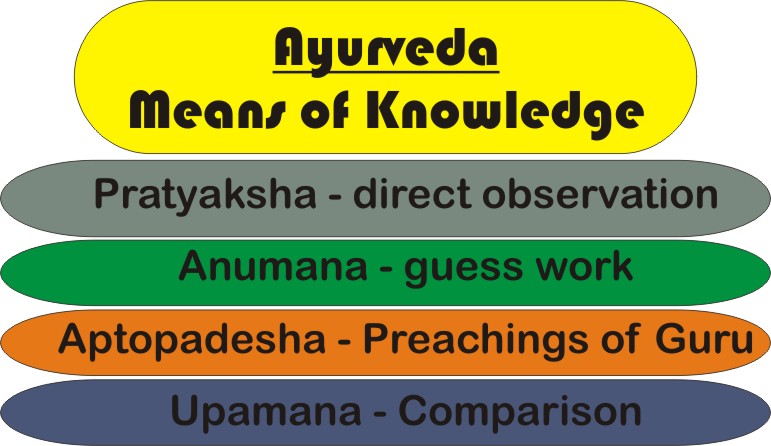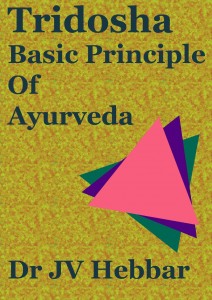How Ancient Seers Developed The Science Of Ayurveda
Ever wondered how the ancient System of Ayurveda developed? What were the tools the ancient scientists of Ayurveda used to gain knowledge?
Ayurveda, the Indian medicine system got developed into a full fledged science over a period of thousands of centuries. The traditional Ayurveda text books like Charaka Samhita, Sushruta Samhita, Ashtanga Hrudaya etc form the basis of Ayurvedic science. Let us have a bird view of, how the ancient seers were able to write these text books, what might be their basis for developing innovative ways of healing with limited resources in those old ages etc.
Difference between evolution of Allopathy and Ayurveda
Allopathy starts explaining their science with the structure of cell, cell components, how they form tissues and further about how organs and systems are formed, and so on.
The way the ancient seers were looking at human anatomy and physiology is quite different compared to allopathy. They were looking at the human body in comparison with nature.
For example, when they saw air, light and water controlling the nature, they were able to observe the same factors inside the body, controlling the health and disease. They named it Vata, Pitta and Kapha.
Good amount of air, good light / temperature and good water leads to healthy nature. Similarly, balanced Vata, Pitta and Kapha leads to health.
Imbalance in air, temperature and light leads to calamity, similarly, imbalance in Vata, Pitta and Kapha, inside the body.
Air, light and water are present everywhere in the atmosphere, but still their presence is specifically felt at particular places like a windy mountain, a fountain etc.
Similarly, though Vata, Pitta and Kapha are present all over the body, their presence is specifically appreciated at particular places, like Vata is more observable in large intestine, joints,
Pitta in stomach and small intestine,
Kapha in lungs, joints etc.

Table of Contents
Four means of learning Ayurveda
The ancient seers learnt about health, disease and treatment by adopting four different methods. They are –
1. Prathyaksha – direct observation
2.Anumana – guessing, based on logic and probability
3. Aptopadesha – firmly believing in the words of experienced and enlightened.
4. Upamana – comparison, simile.
Pratyaksha
1. Prathyaksha – direct observation If you happen to read any original Ayurveda text book, you can appreciate how keen they were in observing things. For example they have written , Pipeelika (ants) get attracted to the urine of patients suffering from Meha disease (diabetes).
Acharya Sushruta used to conduct dissection of dead bodies during night to learn about anatomy. He even has explained how to preserve a dead body and how to conduct dissection.
If you happen to read any original Ayurveda text book, you can appreciate how keen they were in observing things. For example they have written , Pipeelika (ants) get attracted to the urine of patients suffering from Meha disease (diabetes).
Acharya Sushruta used to conduct dissection of dead bodies during night to learn about anatomy. He even has explained how to preserve a dead body and how to conduct dissection.
The direct observation is again of two types.
a. By normal eyes
b. Through spiritual eyes.
Sushruta says that the factors that can be seen from the external eyes are limited. There are innumerable factors that are invisible. Such invisible factors are only visible to Jnanachakshu (eyes of knowledge) and Tapachakshu (eyes of Tapas – Spiritual practice).
Anumana
2. Anumana – Guessing based on logic and facts – The Anumana involves keen observation of facts and arriving at inference.
Best example of use of Anumana can be found in Anna Raksha Vidhi Adhyaya of Ashtanga Hrudayam, where they have explained how to test poison. If food mixed with poison is given to animals, they exhibit certain characteristic features, like – flies die, the crow loses its voice, parrot begins to hoot at the sight of poisonous food, swan loses its gait, cat becomes excited and irritable etc.
Aptopadesha
3. Aptopadesha – Apta means a person who is full of wisdom and dispassion. He is not afflicted with desire, anger, jealous etc. Usually the Guru of ancient ages were Aptas. The knowledge of Ayurveda was passed from Guru on to Shishya (student).
The Guru was supposed to be sound in knowledge and student was supposed to completely surrender to Guru and believe in his sayings.
Upamana
4. Upamana – comparison. – This was one of the effective ways of learning in ancient times. The comparison of air, light and water to Vata, Pitta and Kapha can be said as the best example.
Some also add one more means of knowledge as – Yukti – Wisdom.
So, these were the ways to acquire and preserve knowledge in ancient times. Thanks to those ancient seers that we are reaping the benefits of Ayurveda even today 🙂










2 comments
Sachin Talreja
Believe me doctor. …you are doing a wonderful job not only treating by the natural means but also teaching alot about Ayurveda. I had an inclination towards Ayurveda but you have created a passion in me to adopt Ayurveda as a way of life.
Thanks a lot…..
Sachin Talreja
Dr J V Hebbar MD(Ayu)Author
Dear Sachin Talreja,
it is the kind appreciative words from good people like you that keeps me driven forward 🙂